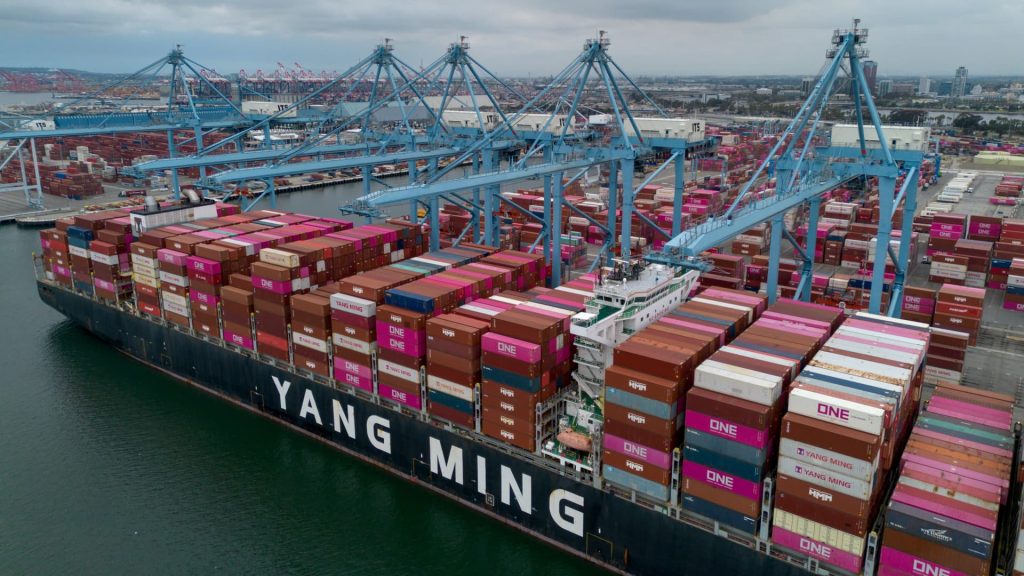The focus on tariffs in recent months — what countries, how much, which goods — has upended supply chains and roiled markets. CEOs are spinning up “war rooms” to deal with the upheaval, and employees are bracing for a recession and possible layoffs from the impact to business.
Understanding the whole supply chain of where goods are made — a supplier’s suppliers and their suppliers — is now critically important to companies that make everything from washing machines to children’s toys. The challenge is finding a way to gather the information needed on tier two, three, and even tier four suppliers. Artificial intelligence is helping companies gain that visibility, but even the most sophisticated technology can’t predict the are-they-on-or-are-they-off nature of President Trump’s tariffs.
Still, Evan Smith, co-founder and CEO of global supply chain management company Altana, says AI is giving companies insights and information that has historically been hard to come by. Speaking earlier this week to members of the CNBC Technology Executive Council on a virtual town hall, Smith said tariffs have taken on a new urgency in his conversations with company leaders.
In fact, he said he’s having more conversations with senior leaders — CEOs, CFOs and boards of directors — than he’s ever had in Altana’s seven-year history, with one theme coming up in every discussion. “The conversation is geopolitics, front and center,” Smith said, “expressed through these trade wars and the tariff volatility.”
Prior to using AI, Smith said companies would typically hire auditors or survey their suppliers to get a complete picture of their supply chain.
Both methods have proven problematic. Getting results from auditors could take up to two years to build out a global picture, Smith says, and the response rate for surveys is about 8%. And even if companies could get a sense of their entire supply chain, the relationship with different vendors is always changing so keeping current becomes an impossible task.
AI is helping to change that. For instance, when Altana launched, it began by building what Smith describes as “the largest organized body of supply chain data on earth.”
“The internet and public data can only take you so far,” Smith says.
‘Era of blind outsourcing is over’
In order to build out its picture of the world, Altana had to learn from the privately held data of global logistics companies, insurance companies, retailers, and banks, to name a few. Altana applies AI to this data to draw connections and produce a dynamic map of the global supply chain. He says the entities Altana works with are “giving a little to get a lot. They contribute to the map of the world and to the AI systems that are learning from the data, but their data stays private, secure and sovereign.”
For companies scrambling to figure out tariffs, AI can enable them to see past their direct suppliers.
Smith uses a washing machine as an example. The manufacturer provides Altana with what’s called a bill of materials — basically all the components of the washer — along with the suppliers the company works with. All this information is uploaded to Altana and, using AI, it is able to show the multi-tier network for that washer, including the suppliers the manufacturer didn’t have visibility into.
Further, Altana’s AI can provide companies insights into how their tariffs would change if they altered their supply chain, produced in different parts of the world, or how costs would change if they re-shored some of the manufacturing.
“When we first started doing this, maybe four years ago, with some rudimentary machine learning tools, it would take us about six months to get through a large enterprise and do that mapping for each of their products,” Smith said. “Today, we can do it all on the same day.”
Smith says audit committees are asking “‘What’s our exposure to China? What happens under these tariff scenarios? Where are we single-threaded with China dependency?’ They have to know their multi-tier supply chain in order to answer those questions.”
“Companies have to have visibility, and it has to be dynamic in order to respond to the next thing,” Smith says. “We exist in a network, and you have to know the network. The era of blind outsourcing is over.”


